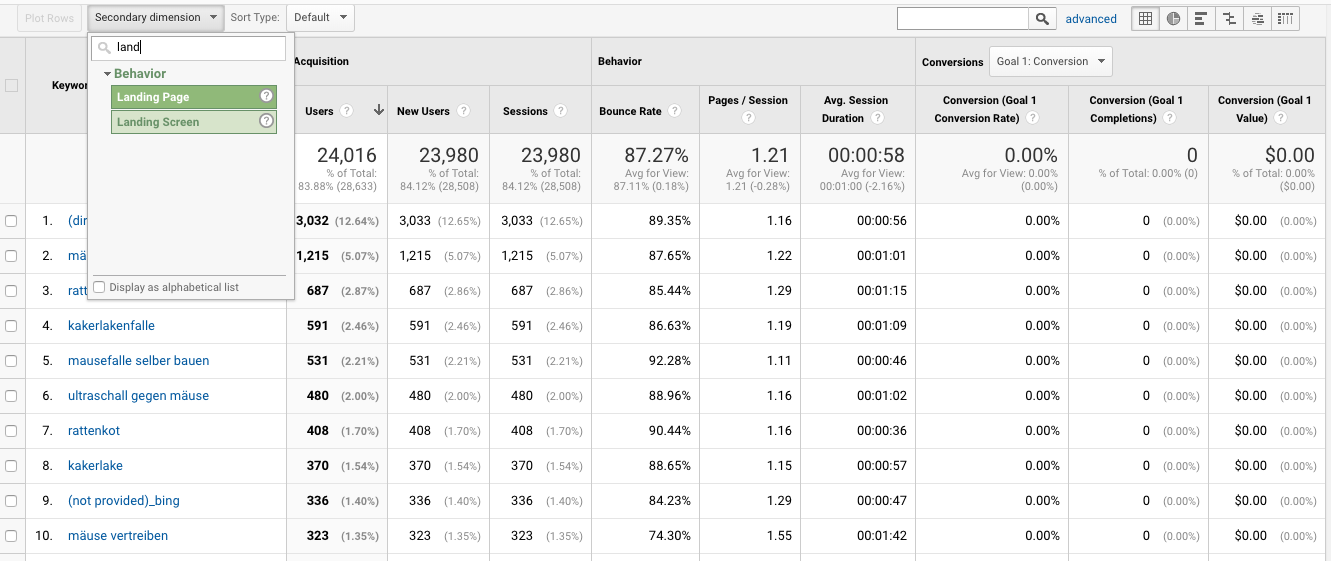Open Advanced Insights with Google Analytics Secondary Dimension Devices
Open Advanced Insights with Google Analytics Secondary Dimension Devices
Blog Article
Opening the Power of Secondary Measurement Analytics for Enhanced Information Insights and Decision-Making
In the realm of information analytics, key dimensions typically take the spotlight, however the true depth of insights exists within the world of second measurements. By taking advantage of the power of secondary measurement analytics, companies can introduce surprise fads, discover connections, and essence much more meaningful final thoughts from their information.
Value of Additional Dimensions
Exploring the value of second dimensions in analytics unveils the hidden layers of information understandings essential for informed decision-making in numerous domains. Secondary measurements give a much deeper understanding of primary information by using added context and point of views. By incorporating additional dimensions right into analytics, organizations can remove extra nuanced and detailed understandings from their datasets.
One trick value of secondary measurements is their capability to sector and categorize main data, permitting a more thorough analysis of particular parts within a dataset. This segmentation enables services to identify patterns, fads, and outliers that might not appear when taking a look at the information all at once. Secondary dimensions aid in uncovering connections and dependences between different variables, leading to even more exact forecasting and anticipating modeling - secondary dimension.
Furthermore, additional measurements play an important duty in enhancing data visualization and reporting. By including second measurements to visualizations, such as charts or graphes, experts can create much more insightful and insightful depictions of information, facilitating better communication of findings to stakeholders. Generally, the assimilation of second measurements in analytics is instrumental in unlocking the full potential of data and driving evidence-based decision-making.
Key Benefits of Utilizing Additional Dimensions
Utilizing secondary measurements in analytics supplies companies a tactical advantage by boosting the depth and granularity of data understandings. By dissecting information utilizing secondary measurements such as time, location, device kind, or user demographics, companies can discover patterns, fads, and connections that may or else remain surprise.
Moreover, the application of secondary measurements enhances the context in which key information is analyzed. By leveraging secondary measurements in analytics, companies can harness the complete potential of their data to drive better decision-making and accomplish their organization objectives.
Advanced Data Analysis Methods
A deep study sophisticated data evaluation methods exposes sophisticated methods for removing important insights from intricate datasets. One such strategy is maker understanding, where algorithms are employed to identify patterns within data, anticipate results, and make data-driven choices. This method permits for the automation of analytical design building, allowing the processing of huge volumes of information at a faster speed than typical techniques.
Another innovative strategy is anticipating analytics, which utilizes analytical algorithms and device knowing methods to forecast future results based my blog upon historical data. By analyzing patterns and fads, organizations can prepare for client habits, market trends, and possible threats, encouraging them to make positive decisions.
Furthermore, message mining and belief analysis are valuable strategies for drawing out insights from disorganized information resources such as social networks comments, consumer evaluations, and survey feedbacks. By examining text information, companies can understand customer point of views, determine emerging fads, and enhance their solutions or products based upon comments.
Enhancing Decision-Making Through Second Measurements

Enhancing decision-making via additional dimensions makes it possible for organizations to make even more informed and targeted critical options. For instance, by segmenting customer information based upon secondary dimensions like buying background or engagement levels, firms can customize their marketing approaches to particular target market sectors, resulting in enhanced conversion prices and consumer complete satisfaction. Additional dimensions can help identify relationships and partnerships in between various variables, allowing organizations to make data-driven decisions that drive growth and profitability.
Implementing Second Measurement Analytics
When incorporating additional dimensions in analytics, companies can unlock much deeper insights that drive strategic decision-making and boost general performance. This requires comprehending the specific concerns the organization looks for to answer and the information points needed to address them.

Furthermore, organizations should utilize advanced analytics tools and modern technologies to improve the procedure of incorporating additional measurements. These tools can automate data handling, evaluation, and visualization, allowing companies to concentrate on interpreting insights instead of hands-on information adjustment.
Conclusion
In final thought, second measurement analytics play an important duty in enhancing data insights and decision-making processes. By utilizing advanced information evaluation strategies and pop over to this web-site applying second measurements successfully, companies can unlock the power of their data to drive strategic business choices.
In the world of information analytics, main dimensions typically take the spotlight, but the real deepness of insights lies within the realm of second measurements.Using additional dimensions in analytics offers companies a critical benefit by increasing the depth and granularity of data understandings. By leveraging additional dimensions in analytics, companies can harness the complete capacity of their data to drive far better decision-making and accomplish their company objectives.
Carrying out data validation procedures and routine audits can help keep data quality and integrity.
By using advanced information analysis strategies and executing secondary measurements effectively, companies can unlock the power of their information look at these guys to drive tactical organization decisions.
Report this page